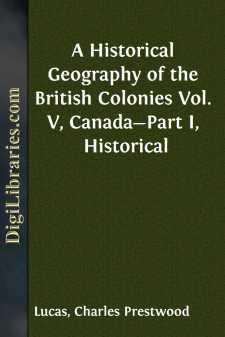Categories
- Antiques & Collectibles 13
- Architecture 36
- Art 48
- Bibles 22
- Biography & Autobiography 813
- Body, Mind & Spirit 142
- Business & Economics 28
- Children's Books 17
- Children's Fiction 14
- Computers 4
- Cooking 94
- Crafts & Hobbies 4
- Drama 346
- Education 46
- Family & Relationships 57
- Fiction 11829
- Games 19
- Gardening 17
- Health & Fitness 34
- History 1377
- House & Home 1
- Humor 147
- Juvenile Fiction 1873
- Juvenile Nonfiction 202
- Language Arts & Disciplines 88
- Law 16
- Literary Collections 686
- Literary Criticism 179
- Mathematics 13
- Medical 41
- Music 40
- Nature 179
- Non-Classifiable 1768
- Performing Arts 7
- Periodicals 1453
- Philosophy 64
- Photography 2
- Poetry 896
- Political Science 203
- Psychology 42
- Reference 154
- Religion 513
- Science 126
- Self-Help 84
- Social Science 81
- Sports & Recreation 34
- Study Aids 3
- Technology & Engineering 59
- Transportation 23
- Travel 463
- True Crime 29
A Historical Geography of the British Colonies Vol. V, Canada-Part I, Historical
Description:
Excerpt
CHAPTER I
EDNESCThe British possessions in North America consist of Newfoundland and the Dominion of Canada. Under the Government of Newfoundland is a section of the mainland coast which forms part of Labrador, extending from the straits of Belle Isle on the south to Cape Chudleigh on the north.
The area of these possessions, together with the date and mode of their acquisition, is as follows:—
Name.How acquired.Date.Area insquare miles.Newfoundland
and LabradorSettlement1583-162340,200
120,000CanadaCession [Quebec]17633,653,946
In the Introduction to a previous volume, it was pointed out that all the British possessions in the New World have one common feature; viz. that they have been, in the main, fields of European settlement, and not merely trading stations or conquered dependencies; but that, in other respects—in climate, in geography, and in what may be called the strata of colonization—the West Indian and North American provinces of the Empire stand at opposite poles to each other. It may be added that, in North America, European colonization was later in time and slower in development than in the central and southern parts of the continent; and, in order to understand why this was the case, some reference must be made to the geography of North America, more especially in its relation to Europe, and also to its first explorers, their motives, and their methods.
The Old World lies west and east. In the New World the line of length is from north to south. The geographical outline of America, as compared with that of Europe and Asia, is very simple. There is a long stretch of continent, with a continuous backbone of mountains, running from the far north to the far south. The mountains line the western coast; on the eastern side are great plains, great rivers, broken shores, and islands. Midway in the line of length, where the Gulf of Mexico runs into the land, and where, further south, the Isthmus of Darien holds together North and South America by a narrow link, the semicircle of West Indian islands stand out as stepping-stones in the ocean for wayfarers from the old continent to the new.
The two divisions of the American continent are curiously alike. They have each two great river-basins on the eastern side. The basin of the St. Lawrence is roughly parallel to that of the Amazon; the basin of the Mississippi to that of La Plata. The North American coast, however, between the mouth of the St. Lawrence and that of the Mississippi, is more varied and broken, more easy of access, than the South American shores between the Amazon and La Plata. On the other hand, South America has an attractive and accessible northern coast, in strong contrast to the icebound Arctic regions; and the Gulf of Venezuela, the delta of the Orinoco, and the rivers of Guiana, have called in traders and settlers from beyond the seas....


